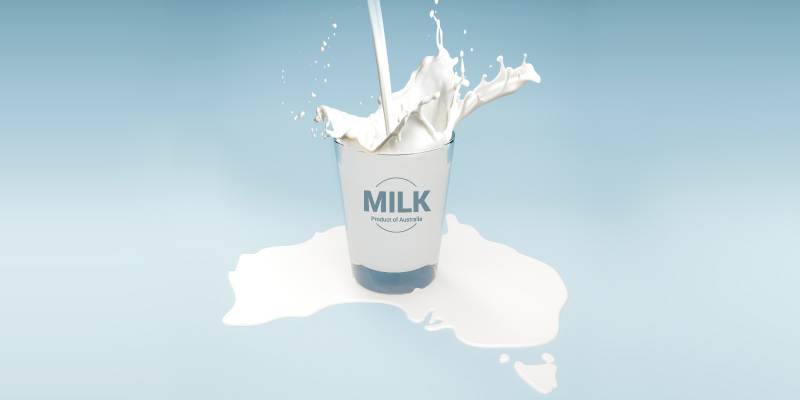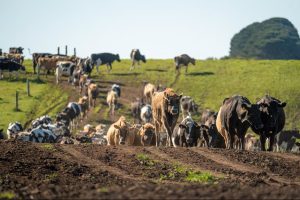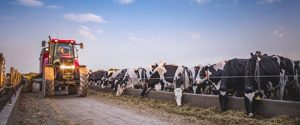
Processors pay more than $6.1 billion to Australian dairy farmers annually and turn their raw and precious milk into the cheese, butter, milk, and yoghurt loved by Australians and the world.
However, times are tough.
The current operating environment is damaging dairy processing businesses and is unsustainable.
Factories are closing. Others are reducing their footprint.
Today, our dairy products are not globally competitive. Aussie dairy is being replaced on shelf with cheaper imports.
Our farmgate milk price is the highest it has ever been compared to our global competitors.
Why are we talking about this?
Dairy processors cannot keep buying raw milk for more than what it can be sold for as a manufactured dairy product.
It was a hard lesson they learnt this season when demand to fill factory capacity drove up the farmgate milk price.
Processors’ goal is no longer to fill capacity.
It is to secure their viability and keep the doors open.
It’s a responsibility they take seriously and here’s why…
Australian dairy processors create more than 70,000 jobs, with about 20,000 of these employed directly.
Of those, almost 60 per cent are in regional Australia and a quarter of these are in the highest job skill categories.
This means Australian dairy processors are providing life-long careers and contributing to vibrant regional and rural communities.
These are the communities with a local footy team, a local primary school, and local businesses.
The regional contribution dairy processors make cannot be underestimated.
Processors want a dairy industry that’s here for the long-term, however the high cost of raw milk in Australia is unsustainable without a change in global market conditions.
Paying a fair price to dairy farmers remains critical.
Dairy processors want to pay a fair price to the dairy farmers they work with.
This will not change.
However, it is critical the price paid is sustainable – so the businesses buying and processing the raw milk can remain economically viable for the future and continue to support the communities in which they operate.
It is well understood dairy farmers are also facing cost pressures.
This is why it’s essential to ensure the price paid to dairy farmers can be sustainably maintained for the year ahead.
What does this mean? What can dairy processors do?
Dairy processors can’t change the cost of electricity and gas, they can’t influence the cost of production in international markets, and they won’t compromise on quality and nutrition.
What they can do, is look at every part of their business and make decisions that secure their future.
Protecting jobs and the dairy products we know and love.
In the lead up to the announcement of opening farmgate milk prices on June 1, there’s always robust discussion.
It’s important to share the facts about how farmgate milk prices in Australia are determined and the variables at play.
By 2pm Monday June 3, 2025 (noting June 1 this year falls on a Saturday), Australia’s dairy farmers will have a month to assess farmgate milk price offers and contract terms from processors.
Dairy processors will develop their own view of the farmgate milk price they will pay for the new season, with careful consideration to get their product and market mix selection right.
What we expect to see is demand for raw milk much more closely linked to market conditions.
Here are the facts going into 2024-25
- 71% of Australia’s total milk production is directly trade exposed to global commodity markets and exchange rates. Australian dairy must compete with imports and exports.
- The spot Commodity Milk Value (CMV) is about $7.30 per kilogram of milk solids. This is about 30% or $2.00 below the current weighted average Australian southern region farmgate milk price of $9.40 per kilogram of milk solids.
- Spot prices of major commodities, including cheese, skim milk powder and whole milk powder, have all dropped during the past 12 months.
- The volume of dairy imports is impacting the competitiveness of locally produced dairy products. Imports are up 17%.
- Australian dairy exports have also dropped by about 17%.
- At the start of the FY2024 season, there was a $3.00 or 30% difference in the farmgate milk price between Australia and New Zealand, and this continues to be more than 20% or $2.00.
In the past 18 months, 11 dairy processing businesses have publicly announced a closure.
We must work together to better balance the risk across the supply chain.
We want a viable and sustainable dairy industry well into the future.
John Williams
ADPF Chair
You can now read the most important #news on #eDairyNews #Whatsapp channels!!!
🇺🇸 eDairy News INGLÊS: https://whatsapp.com/channel/0029VaKsjzGDTkJyIN6hcP1K

























